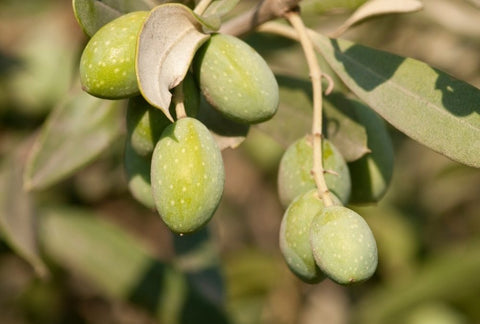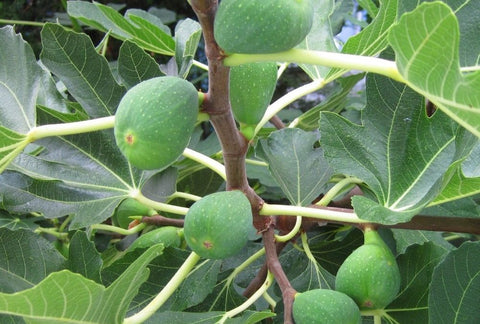How to Grow Olive Indoors: A Guide for Urban Gardeners
Fresh, homegrown olives can be a delightful addition to your meals. However, growing them indoors can seem challenging due to their specific needs.
Have you tried growing indoor plants only to find them struggling or producing poor yields? Indoor olive trees require specific conditions to thrive and produce quality fruit.
With the right care, setup, and variety selection, you can successfully grow and harvest olives indoors. Here’s how!
Best Olive Varieties to Grow Indoors
Ficus varieties can grow well both indoors and outdoors. We’ve picked some of our favorite indoor olive varieties for you:
Arbequina
Best for indoor growth with mild, fruity olives. Find Arbequina
Picholine
Great for snacking and mild-flavored oil. Buy Picholine
Nocellara de Belice
Known for mild flavor and buttery texture. More about Nocellara
Manzanilla
Popular in the U.S. and often used in brine or stuffed. Get Manzanilla
Best Setup for Olive Plants
You’ll need:
Planter:
A pot that is at least 12″ / 5 gal, though there is some flexibility. The plant will grow in proportion to its planter – so size is based on how tall you want your plant to grow.
Soil:
Free-draining mix
Plant Food:
Low phosphorus blend (8-3-10).
Grow Light:
A strong grow light that can give the equivalent of 6+ hours of direct sun.
Starting your Olive: Seed vs Propagate
Olive trees grown for fruit are usually started with a live plant or cutting. This is because plants grown from seeds will grow as “wild types” – meaning they won’t produce the same fruit they came from.
Why you shouldn’t start Olive from seed
If you grow an Olive from seed, it won’t grow “true to type” meaning the fruit you will get will be a weird cross between the many different varieties – and chances are it won’t taste very good.
Propagating Olive: How to Clone from a Stem Cutting
If you’ve already got an Olive plant you love (or a friend does!) you can easily “clone” it with just sharp scissors and a clean glass of water. First, cut a couple 6” shoots of new growth (avoid anything woody). Next, remove the lower leaves, so the bottom half is just stem. Place in a glass of 3” of water, making sure the cut leaf spots are underwater. Place the glass on a bright windowsill and change the water every few days. In a couple of weeks, roots should emerge and you can transplant them into your container. While using additional rooting hormones won’t hurt, it’s not necessary with Olive plants.
- Cut 6” section of new growth
- Remove leaves halfway and place them in the water on a sunny window sill
- Wait 21 days for a few ½ inch roots to form and carefully transplant into their final container
How to Transplant Olive
Many nurseries ship Olive as “Bare-Root” – this means the roots are not in soil and the plant is dormant. It’s a bit strange to receive something that looks like a bare stick, but it’s much easier to make sure you’re not bringing any pests in. To transplant your bare root Olive plant:
- Prepare your pot by filling it ½ with soil and shaping it like a cone
- Prepare the plant roots by trim any that seem dead, mushy, or excessively long, then shape it like a cone to fit on your soil.
- Check the fit so that the highest roots are just below the rim of the pot. Adjust the soil as needed.
- Once the fit is good, fill the pot up to the highest roots, lightly tapping the soil down as you go. Finish up by giving it a good deep watering.
If you received your plant in a nursery container with soil, the process is much the same. Once it arrives, gently pull it out to check on the roots (adding water can help if it’s dry). If they’re not hitting the edge and there’s plenty of soil, then resist the urge to transplant it into a bigger pot. If the roots are crowded and starting to circle around the pot, then you’ll need to repot it. Use a slightly larger pot (2 to 3 inches larger in diameter). Fill the bottom with enough new soil so that the top of the nursery pot lines up with the top of the permanent container. Finish by filling around the edges and watering thoroughly.
Where to grow your Olive plants
While you should take advantage of the sun (it’s free and perfect for plants) there are limited circumstances where indoor natural light is enough for Olive plants to grow well. A very bright window can cut your grow light needs in half, but if you want to grow lots of Olive, you’ll still need one. For an introduction to grow lights, head over to our post on grow lights for indoor gardeners. We’ve also got a buying guide for screw in types, but to keep things simple in this guide, we’ll just provide directions for the 24W Sansi bulb, which we think is a good middle-of-the-road option.

How bright should your grow light be?
Olive plants need the equivalent of 6+ hours of direct sunlight [DLI of 18+ mol/m²/day] to grow their best. In order to provide an equivalent amount with a grow light, it needs to be pretty bright! The 24W Sansi bulb should be placed 6 inches away from the top of the plant. This will give your PPFD (the standard measure of brightness) of 500 μmol/m²/s.
How many hours per day do your Olive plants need under a grow light?
Olive plants are known as “long-day” meaning that they develop faster with over 12 hours of light (and only need 6 hours of darkness to rest) so setting your timer to light your plants for 14+ hours is best.
Olive Plants Need Warm Temps with an Annual Chill
Olive plants are native to northern climates and need to rest each winter – brought on by shorter days and colder temperature. Plants need to be in between 32°F and 45°F for 200-300 hours in order to internally build the cellular structures that will become fruits. When your indoor plant starts to lose its leaves in fall, place it outside for a few months until you meet the “chilling requirement” (but bring them in if temps drop below 30°F for longer than a day). For the rest of the year, they are perfectly happy with a wide range of typical indoor temperatures.>
How to Prune Olive Trees

Pruning is important for Olive trees. Even dwarf varieties can grow tall – and pruning keeps them easier to manage, care for, and fit in our living space. Pruning also helps the plant focus its energy by limiting the number of branches we allow to develop. The basics of pruning are simple; plants grow from their tips (not bottom), but if you remove the tip it will redirect the growth to side branches. Explore various pruning methods like Bonsai, Espalier, and Spur. If unsure, use the well-established “Open Center Pruning” method.
The standard for most fruit trees is “Open Center Pruning” where the canopy consists of 3 or 4 evenly spaced main branches. This lets light and air penetrate through the center and reach the edges for an even, lush plant. Make the first cut when you are happy with the height of the trunk – we recommend letting the trunk be at least 2 ft above the soil. This cut should be right above a bud or branch coming off the main trunk. This will encourage the main branches to form, so if more than 3 or 4 come out then remove the extra with an eye to keep spacing even. The main pruning is now done, so just once or twice a year you’ll want to do a maintenance prune to remove any crossing or dead branches and keep the center short.
How to Harvest Olives
Olives are ready to pick once their skin changes color and they detach easily. Use the “supermarket” ripeness test for confirmation. When they are soft and drooping down simply break the fruit away from the branch. Ripe olives go bad very quickly off the branch, so it’s best to eat or process them immediately!
Olive Tree Longevity
Olive trees can live for over 500 years with proper care, potentially outliving their growers!
Shop This Blog
The right supplies can take the guesswork out of caring for your plants – and turn care from a daily to weekly routine. Through our grow tests, we’ve found these products to produce the best indoor Olive trees (and also have simple maintenance). Plants are adaptable and can grow in many different conditions, so they are by no means necessary if you already have other supplies.
Best Containers for Olive: Ceramic Self Watering Planters
Plants thrive on consistent moisture but can suffer if they’re waterlogged. A semi-porous ceramic self regulates ideal conditions. Our favorite is the COSWIP planter. Runner up is XS Self Watering Planter by Wet Pot.
Best Soil for Olive: Standard Potting Mix
Olives like a rich and moist root zone – so you are best off with a standard potting mix – we like this Potting Mix by Rosy Soil.
Best Nutrients for Olive: Balanced Blend
Olives like nutrients that are equal parts nitrogen, phosphorus, and potassium (with NPK numbers like 8-3-10). For a Balanced Blend we recommend: Espoma Citrus Tone
Best Light for Olive: DIY or Soltech
There is a very small chance that you have the bright windows needed to grow these without a grow light. If you are looking for a higher-end option – we love the Aspect Light by Soltech. For a more affordable option, a DIY setup using a 24W Screw-in Bulb by Sansi with a Clamp Light and Timer works well too. Check out our complete guide on a DIY setup for less than $40 or our buying guide for screw in bulbs.
Explore More
For more on grow lights, visit our guide on grow lights for indoor gardeners and our buying guide for screw-in types.








There are no comments for this article. Be the first one to leave a message!